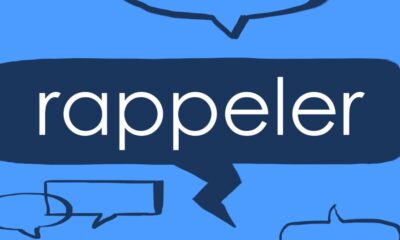In our world of instant messaging, texting, tweeting and social media, letter writing may seem hopelessly old-fashioned. As American comedian Steven Wright puts it, “I stayed in a really old hotel last night. They sent me a wake-up letter.”
For centuries, though, letter writing was an art form and an intrinsic part of life, in all literate societies including France. To quote the writer Anatole Broyard, “In an age like ours, which is not given to letter-writing, we forget what an important part it used to play in people’s lives.”
Over the years, French letter writing protocols and formats were developed that are still used today.
French formal letters
Letters are still standard tools for correspondence in business and administrative communication, for product or service requests or complaints, to accompany job applications and other formalities.
 Writing a properly worded and formatted letter gives credibility to its content, whatever that is. Even if a letter is sent as an attachment to an e-mail, the correct form can easily be followed.
Writing a properly worded and formatted letter gives credibility to its content, whatever that is. Even if a letter is sent as an attachment to an e-mail, the correct form can easily be followed.
Putting everything in its proper place is a good start. The return address belongs at the top left of the page and the recipient’s address starts below it to the right side. Below that, the town or city from which the letter is being sent is included along with the date.
The golden rule
“Vous” is always used for a formal letter, never “tu”.
French salutations
The salutation is also very formal and includes the recipient’s title when appropriate, as in Monsieur le Directeur. Alternately, use Monsieur, Cher Monsieur, Messieurs or Madame, Chère Madame or Mesdames.
Content
The body of the letter should be concise, to the point and formally polite.
- If you are following up on a previous letter, you might start with, “Suite à … je vous écris pour…” or “Nous vous remercions de votre lettre du …”.
- If your letter is a request for something, you can use “Je vous serais reconnaissant de … “ or “Je vous prie de …”.
Signing off
You might end with, “Dans l’attente de votre réponse …”, then sign off with one of these phrases, which sound much more formal than the accepted “Yours sincerely” in English but are de rigueur in a French formal letter:
- Je vous prie d’agréer, Monsieur le Directeur, l’assurance de ma considération distinguée
- Veuillez accepter, Messieurs (or Monsieur or Madame), mes salutations distinguées
- Croyez, cher Monsieur (or chère Madame), à l’expression de mes sentiments les meilleurs
French personal letters
French personal letters are much more informal. Your return address sits at the top right of the page and below it your location and the date, but the recipient’s address is not required.
 You may also use “tu” for anyone you would address that way in person and start with Cher or Chère followed by a given name.
You may also use “tu” for anyone you would address that way in person and start with Cher or Chère followed by a given name.
Some useful phrases to start with include:
- Je te remercie de ta lettre …
- Ça m’a fait plaisir d’avoir de tes nouvelles.
Or, if you’re a procrastinator:
- Je suis désolé de ne pas t’avoir écrit plus tôt.
The body of the letter can be as chatty and friendly as if you were talking to the person.
Sign off affectionately with:
- Je t’embrasse bien affectueusement
- Grosses bises (very informal)
Or more simply with:
- Bien amicalement
- À bientôt
To include other friends or family in the letter, you might add:
- Embrasse Sophie pour moi.
- Paul te fait ses amitiés.
Addressing the envelope
If you’re mailing your letter, here are guidelines for addressing the envelope, line by line:
1 – Recipient’s name
Begin with Monsieur, Madame or Mademoiselle followed by the recipient’s full name, as in Monsieur Jacques Untel. This is polite form for both formal and informal letters. For a married couple, use Monsieur et Madame Untel.
On a business letter envelope, you can use the person’s title instead, for example, Madame la directrice.
2 – Recipient’s title
If you’ve used the person’s name in the first line, use the second line for his or her title, for example, Directrice, Service à la clientele.
3. – Company or organization
Use the full name or accepted abbreviation, as in Hôtel Au Bon Accueil and SNCF.
4 – Number, name and type of street
Full street names can be abbreviated, e.g. av for avenue, as in 45 av de la République, or bd for boulevard, as in 15 bd de Beaumanoir. If there’s no street address, this is where you put the post box number.
5 – Postcode and town or city
The postcode comes before the name of the town, as in 75010 Paris.
Return addresses should be written on the back of the envelope with the abbreviation “Exp.” (short for Expéditeur/-trice).




collins_dictionary_official
The home of living language. #wotd #wordlovers #collinsdictionary
Read our word of the week definitions and blog posts: